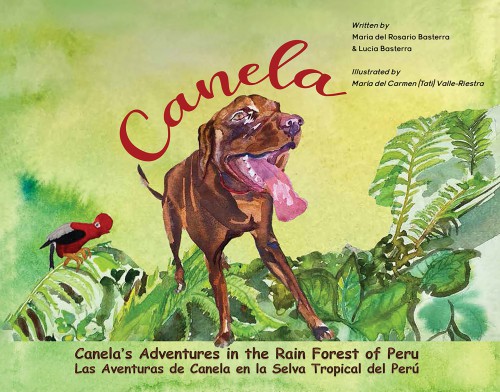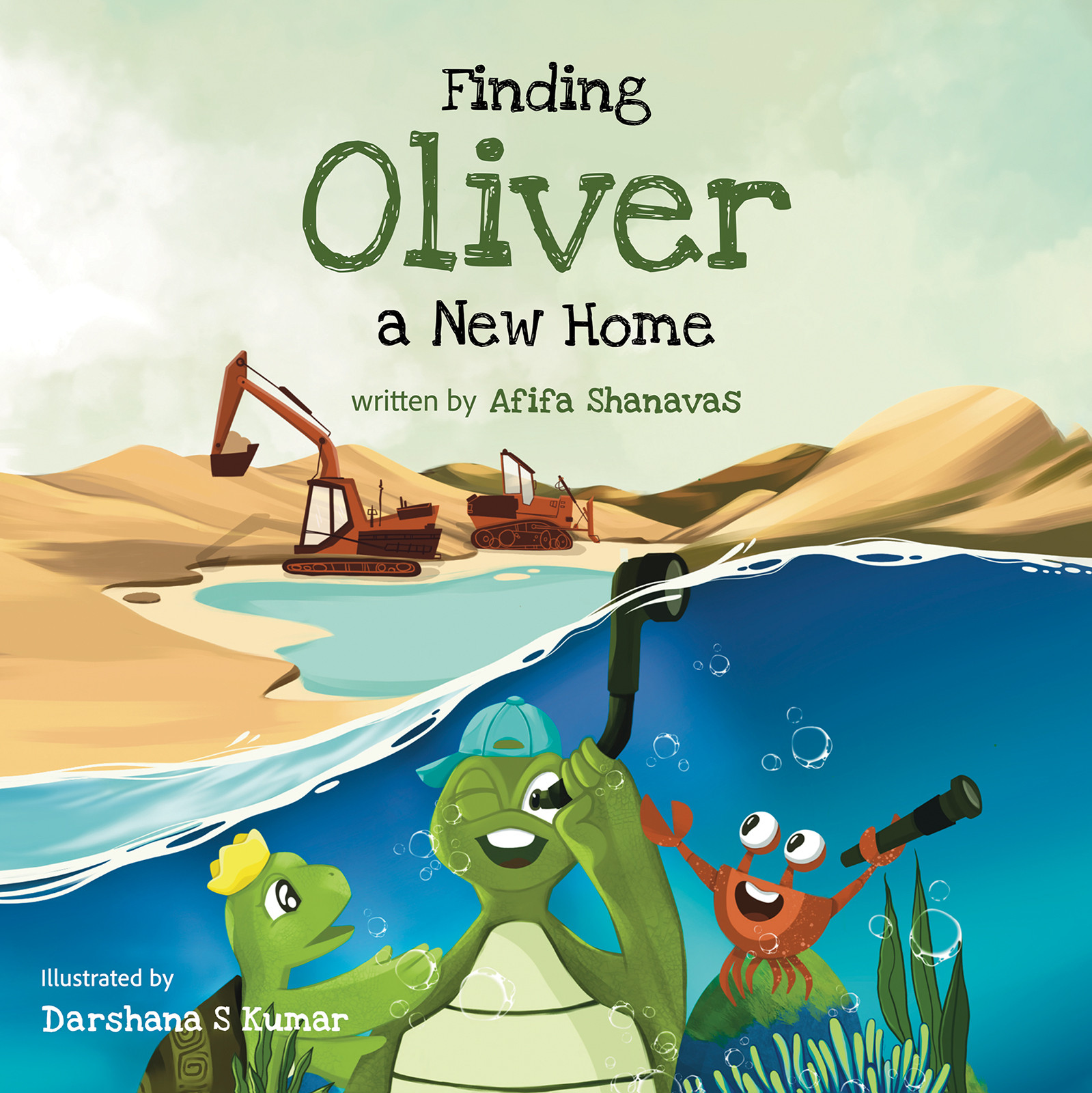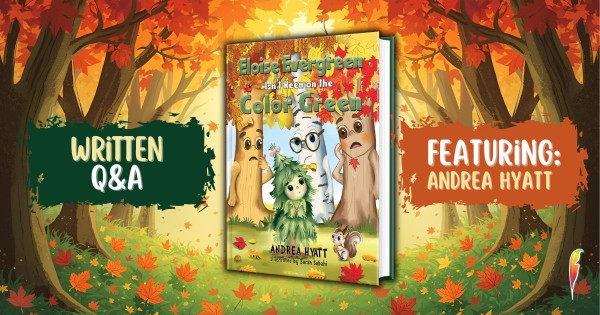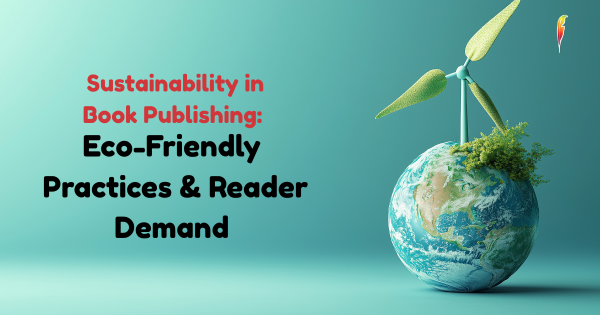.png)
Celebrating World Environment and Ocean Days Through Children’s Books
In celebration of World Environment Day and World Ocean Day, both of which highlighting the importance of protecting the planet we call home, we’re featuring two passionate authors whose works share a perspective to these themes. Through their writing, they explore the role storytelling plays in inspiring environmental awareness and change.
Maria del Rosario Basterra, co-author of Canela’s Adventures in the Rain Forest of Peru
1. What inspired you to set Canela’s story in the Peruvian tropical forest, and how did you choose which environmental themes to highlight?
I was born in Peru and have travelled to many parts of my country during the past years. In 2008, I visited the Tambopata-Candamo tropical forest National Park with my family. I was amazed not only by the beauty of the forest but also by the fragility of the environment. There was a lot of illegal mining at the time that not only destroyed the forest but also polluted the environment including the rivers. As we were returning to Lima, the capital of Peru by plane, I had tears in my eyes when I saw the tropical forest from above. So beautiful, so important for the environment, and yet so threatened. I didn’t think about writing a children’s book at that moment but the images of the tropical forest remained in my soul and in my heart.
2. Why do you think storytelling, especially for young readers, is such a powerful tool for promoting environmental awareness and empathy for wildlife?
Young children love books so storytelling, especially with attractive illustrations, get their attention and engage them. As I child development specialist I know how critical these books are not only in developmental terms but also in inspiring children to learn about new things. Children’s books are not only fun; they are also a source of information that can guide their actions for the rest of their lives. These books can and should promote environmental awareness and empathy for wildlife and plants.
3. Given your background in educational psychology and bilingual education, how did that influence the way you approached storytelling and the environmental message in the book?
I love this question. Preschool education plays a very important role in children’s lives. What they learn at that age is imprinted in their mind. Therefore, the early years are a good time to make them aware of the importance of protecting our environment. As an educational psychologist I focus on ensuring that the text and the illustrations are developmentally appropriate. While many children at that age do not read, they listen to the content and look at the images and if it is not at their developmental level, they just ignore it and a good opportunity for learning is lost. In addition, the words and message have to be interesting to young children. Material has to be fun---telling a good story---and yet it has to have meaning, as well.
Regarding bilingual education, many countries including the United States have large numbers of children who are bilingual and/or they live in environments where Spanish is spoken. Offering stories in both languages plays a very important role not just for them but also for their families. Through bilingual books, Spanish speaking families who live in countries where Spanish is not the official language have the possibility to read bilingual stories like ours to their children in their native language. This strengthens the relationship between parents and children.
Canela’s Adventures in the Rain Forest of Peru attempts to teach children about protecting the environment in fun but meaningful ways. Children love the main characters of the story--Canela, the chocolate labrador and Caliente, the colorful boa constrictor. When I read the story to young children I see how much they enjoy the book and how happy they seem when the characters help clean the river at the end of the story.
4. What do you hope children take away from Canela’s adventures – not just about nature, but about curiosity, friendship, and responsibility?
First, I hope that children learn about the beaty and the importance of rain forests. We are lucky to have a wonderful illustrator, Tati Valle-Riestra, a Peruvian artist who painted extraordinary images that invite the children to enjoy learning about the animals, plants and geography of the Rain Forest of Peru. The images are accurate depictions of what the tropical forest looks like and provides children with valuable information about this environment. Secondly, I also hope that the story creates a sense of curiosity not only about the environment but to what happens in the story: how two animals manage to contribute to cleaning a river while the relationship between them grows and develops into a wonderful friendship. Finally, I hope that children learn how important it is to care for nature and develop a sense of responsibility. This is where teachers and parents play an important role, helping children at the preschool center, at home, and in their neighbourhoods learn to take care of plants and animals, and to recycle and keep garbage out of public spaces.
5. If Canela could go on another adventure, where would she go next, and what new environmental lesson might she learn?
Canela is posed to go help a Monarch butterfly on her migration to Mexico in the second of the book series entitled Canela and the Monarch butterflies. Through the story children will learn about the extraordinary migration of the Monarch butterflies all the way from Canada to Mexico. A magnificent trip of about 2,200 miles. They will also learn about the importance of certain plants in supporting them and the hazards of pesticides. I have already developed a draft of this next adventure for Canela, and our wonderful illustrator is working on the images now.
Our beloved dog Canela passed away last November, but we hope that her spirit will continue to inspire young children to love and respect the environment as we present stories that teach them about nature and their role in preserving it.

Afifa Shanavas, author of Finding Oliver a New Home
1. Why did you choose turtles as your main character – do they hold a special meaning for you?
Turtles have played a huge role in my professional journey as an Environmental Engineer. As someone working closely with marine ecology, I often encounter sea turtles. One of the key turning points in my career was when I rushed an injured sea turtle to a nearby turtle rehabilitation center. The first time I held that injured turtle is a moment very close to my heart. Later, while working as an environmental specialist on a major marine project in the Maldives, I was able to rescue around 20–25 sea turtles from a work site. That experience deeply inspired me—and eventually led me to write this children’s book.
2. How did you develop the personalities of each family member – Papa, Mama, Oliver, and Eva?
It came naturally to me. I knew I wanted to tell the story through the eyes of curious and adventurous little Oliver. Since he’s a big brother, he’s also slightly responsible and has a deep love for his little sister, Princess Eva. Throughout the story, I used simple accessories to highlight each character’s personality—Oliver wears a cap, Eva has a crown, Dad has a mustache, and Mum always has a sea flower on her head.
3. How do you introduce the idea of habitat loss in a way that children can understand without feeling overwhelmed?
Yes, this was probably the trickiest part. I didn’t want kids to feel negative or burdened after reading the book. The message I wanted to share is that with today’s growing population, construction and development are no longer optional—they're more often necessary. The key is to pursue them sustainably, giving proper importance to environmental protection.
4. Was there a moment in your own life when you realised how important it was to protect nature?
I think it started during my professional career. I began working on-site as an environmental engineer in 2018, and seeing things firsthand made me realize how crucial it is to protect and preserve what we have. I’ve seen how long it takes to revive something that’s been damaged—especially fragile ecosystems like coral reefs and seagrass beds. It’s also fascinating to observe how these habitats play vital roles in maintaining balance in our oceans.
5. What changes do you hope this story might inspire in how children (and adults) think about nature?
First and foremost, I hope they have fun! I want them to enjoy the subtle humour and colourful illustrations. At the same time, I hope they come away with an understanding of the importance of sustainable development—that it is possible to meet human needs while still protecting nature, as long as we put some thought and effort into it.
Explore more inspirational stories designed to enlighten, uplift, and entertain – each offering valuable lessons and heartfelt moments.
We use cookies on this site to enhance your user experience and for marketing purposes.
By clicking any link on this page you are giving your consent for us to set cookies



